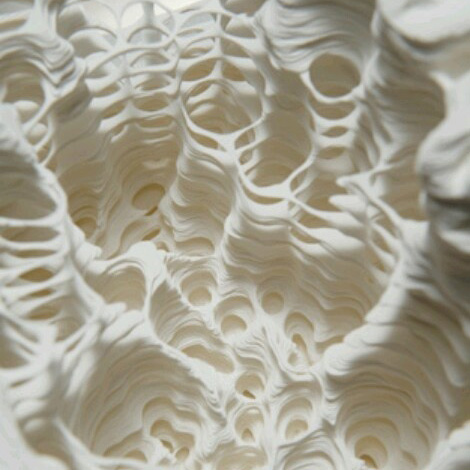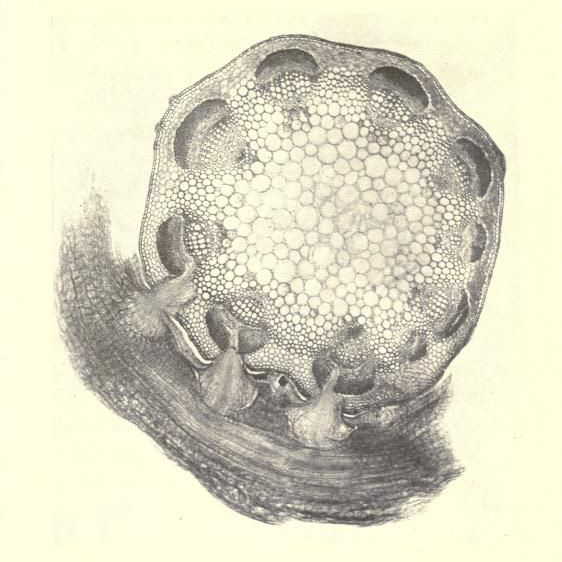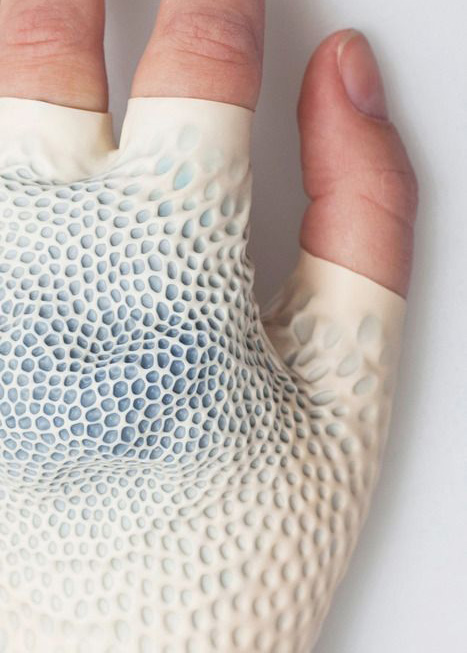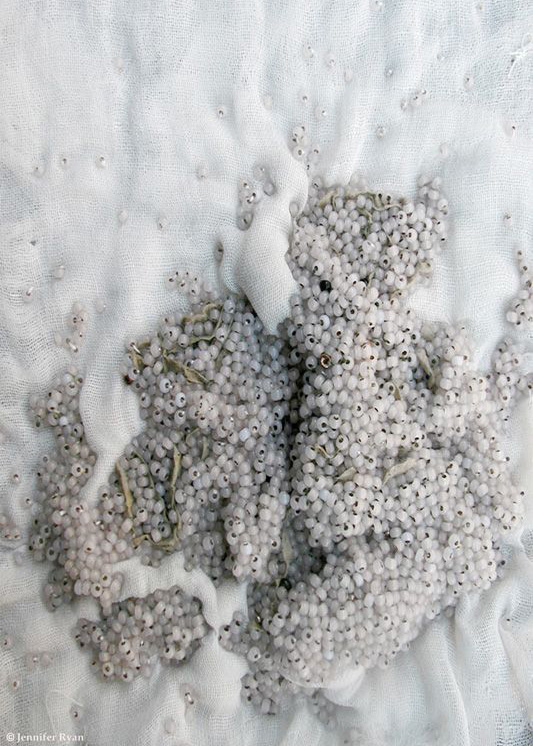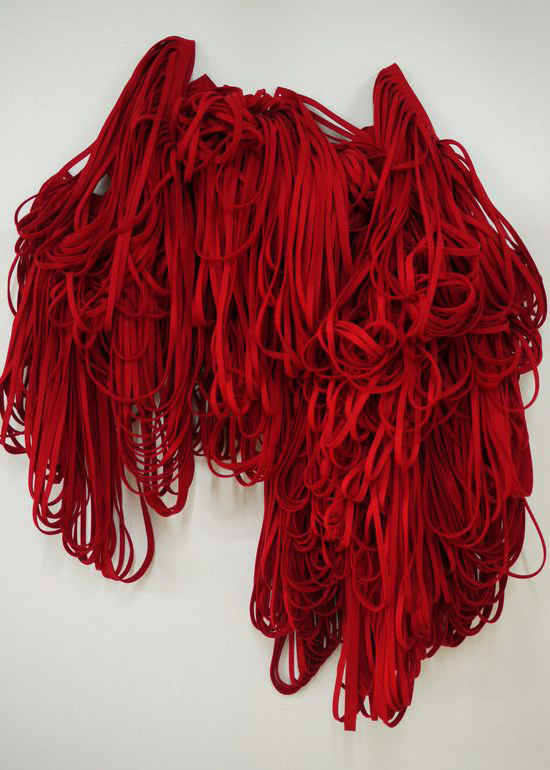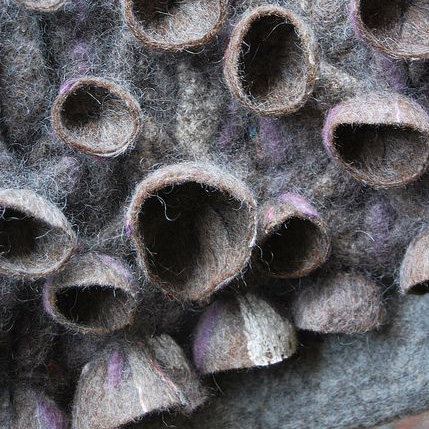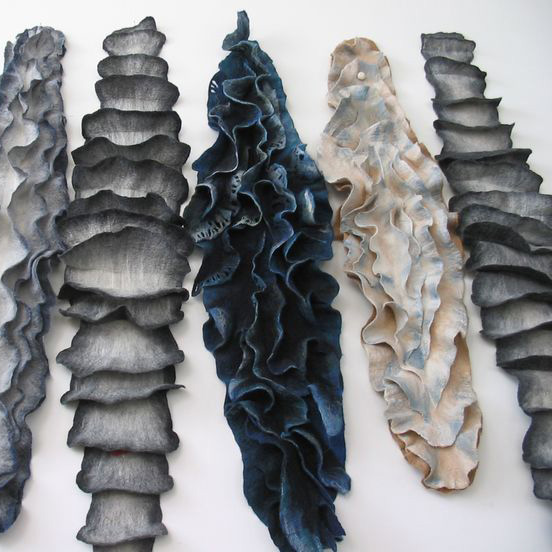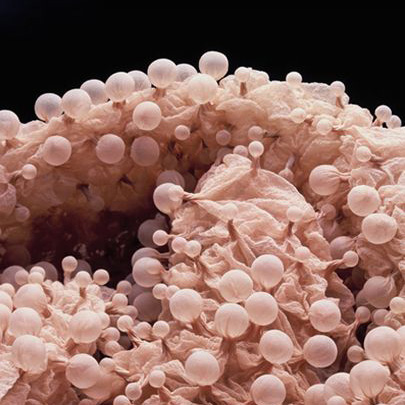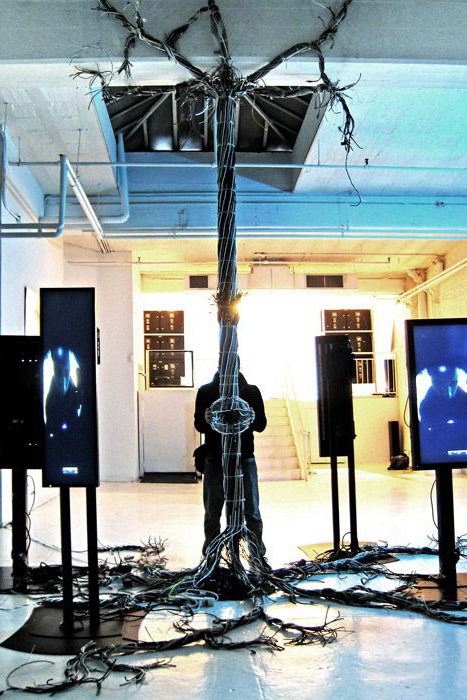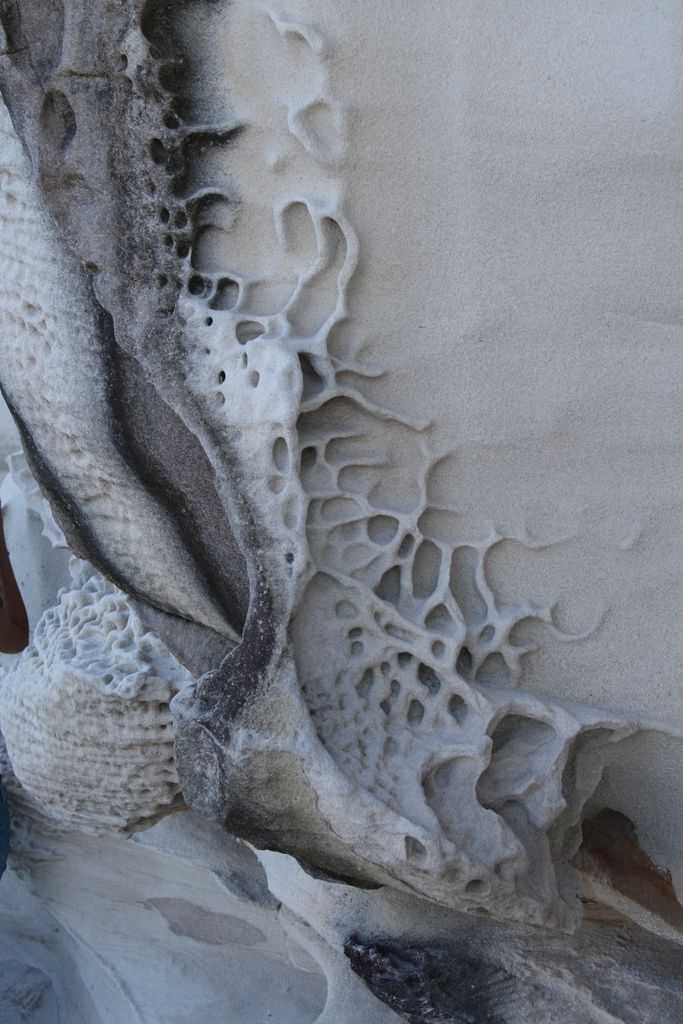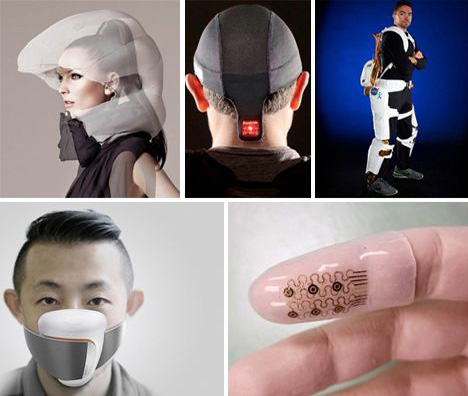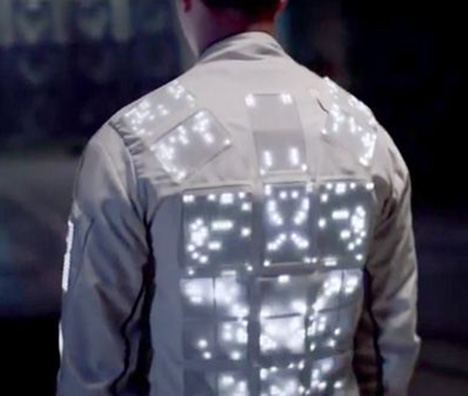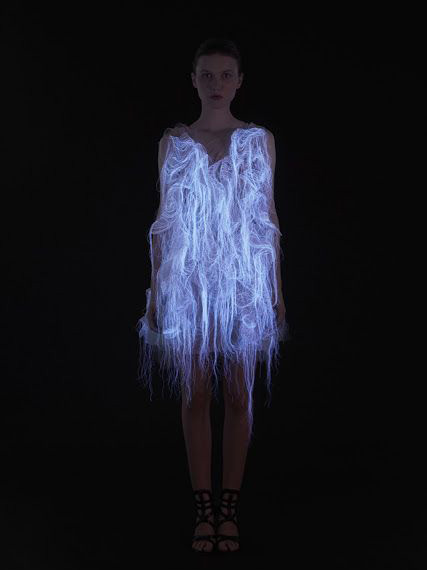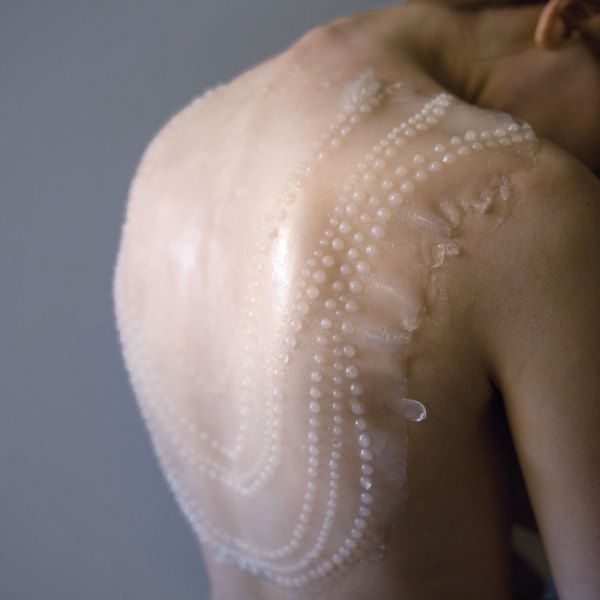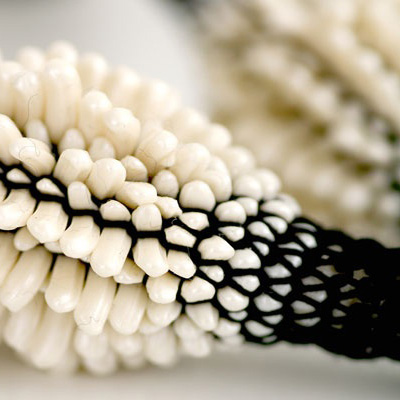Design Process Lorem
Designing The Interaction
Design Process
But Why?
When holding ideation meetings to decide what our team would create, we were inspired by artists who questioned the bounds of social acceptability, performance art, and the continuity of time and self. We were all struck by the idea of making the unknown known, and compelled by the question of what happens when you invite those around you to acknowledge your feelings.
We debated whether we wanted our project to be an installation art piece or a more personal experience. We could create a kiosk where peoples’ heart beat was read and layered into a collage of heartbeats at the end of the day. We could make a radio station that got data from willing participants and broadcast them to a local audience. Eventually, we decided to make a creature-like data visualization sculpture that a person could interact with to learn more about themselves, and allow others to learn about them.
Early Iterations
Where did we begin? How has our design evolved?
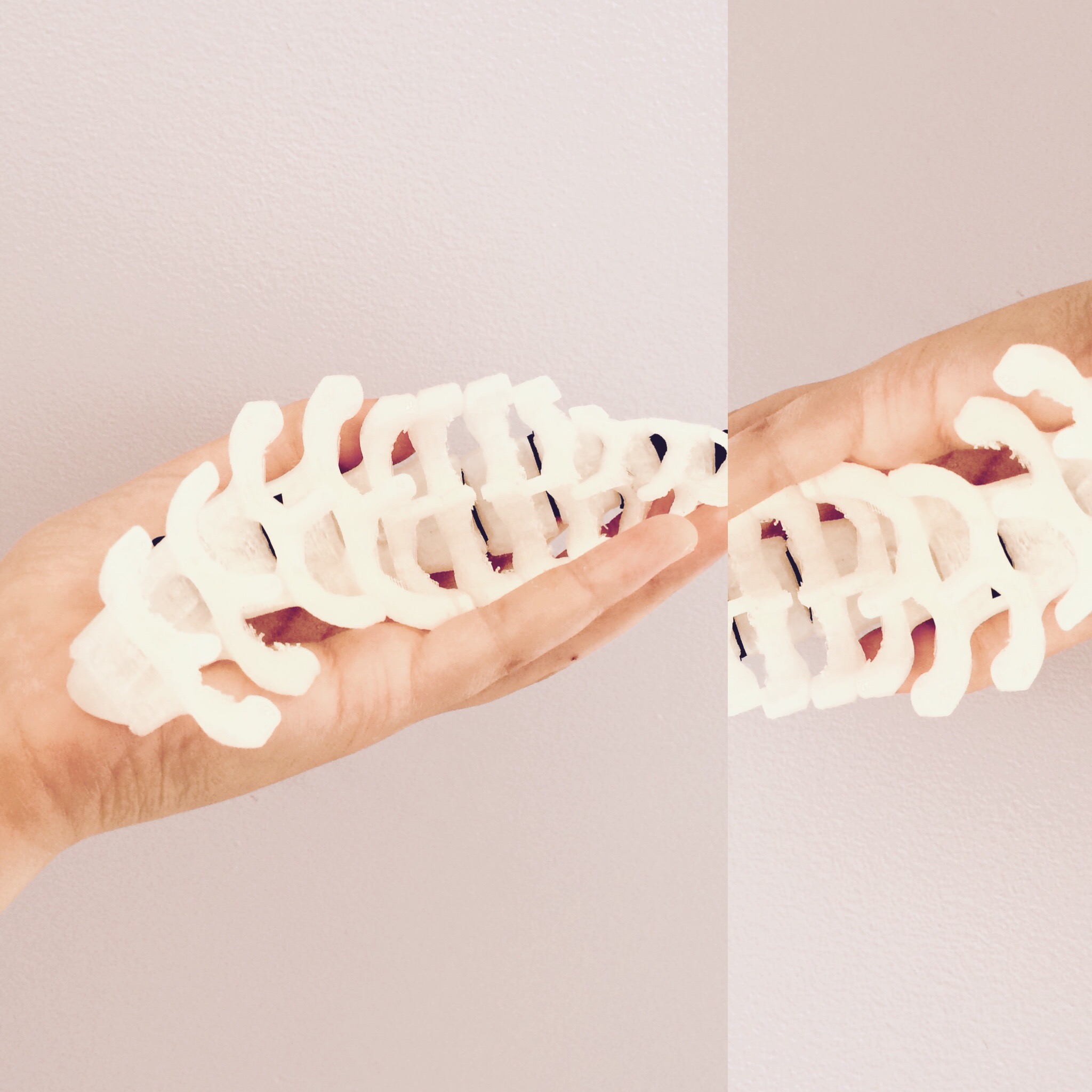

Exploring visualizing data through external cybernetic organisms.
Throughout the first two prototyping periods, we explored the space of making an external organism that people could interact with. We had visions of something that could interact with people but not be too invasive. At the end of the first three weeks, however, we realized that our current design - a silicon-cast spine with vibration motors that respond to your breathing - wasn’t the direction that we wanted to go. It was off-putting to look at, and the interaction was not particularly intuitive for viewers. After reviews of this design, we decided to change directions and make a wearable art piece instead of an external organism.
Our Design Pivot
When re-forming our design goals, we were inspired by the artist Anouk Wipprecht. She makes wearable art pieces that do much of what we’re trying to do: create visual responses to data gathered by sensors. We were able to use the previous work we had done to plan our material choices and future design. We decided that we wanted to use silicon in our final project to create pods for visualizing light, 3D printed parts for organic integrated shapes, and specific materials to create a simultaneously alive and futuristic bodice to house the components. These material choices helped to define our designs significantly, and enabled us to use prior work we had done towards our end goal.
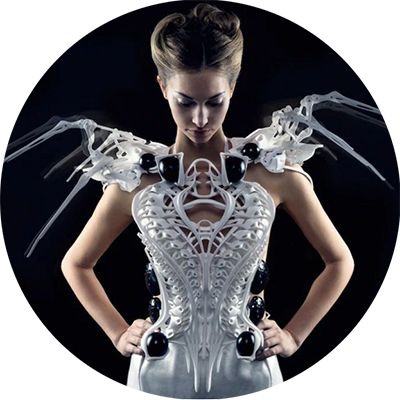
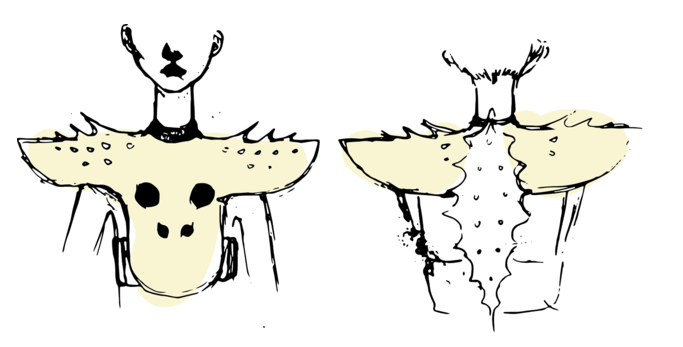
After deciding to pivot to an interactive wearable art piece rather than an external interaction, our team ideated further and created some sketches. We chose an idea we all liked and went with it! Further design changes occured over the course of our fabrication process. More information about this can be found on our mechanical page.
Inspiration
Please see our board for original sources.
